Dodecahedron: Sophisticated Ancient Device Found In Europe And Asia
A. Sutherland - AncientPages.com - Over the years, almost thirty theories have been documented, many of them dismissed, and none of them considered satisfactory.
They are considered an ancient archaeological mystery despite many attempts to solve it.
Over 100 of these anonymous and enigmatic objects have been discovered on Roman sites in Great Britain, Belgium, Germany, France, Italy, Luxembourg, Netherlands, Austria, Switzerland, Eastern Europe and even in Asia in countries like Thailand, Burma, Vietnam.
They do not appear in any surviving pictures of the time, although, they can be found in museums and many private collections. The purpose of these odd objects - commonly known as a Roman dodecahedron - has been widely discussed, but it is not entirely clear why they were created.
Were the artifacts really created by the Romans or just named "Roman" because many of them were unearthed in countries that once were part of the Roman Empire?
The artifact's origin is also unclear because it's existence was never mentioned in the Roman, meticulously kept accounts. The dodecahedron remains a mystery, dated from the 2nd or 3rd century AD.
The dodecahedron are made of bronze or stone and has twelve flat pentagonal faces sides, each with a circular hole in the middle, (usually not the same size).

Two ancient Roman bronze dodecahedrons and an icosahedron (3rd c. AD) in the Rheinisches Landesmuseum in Bonn, Germany. The dodecahedrons were excavated in Bonn and Frechen-Bachem; the icosahedron in Arloff. Image credit: Kleon3 via wikipedia
The objects are relatively small. They range in size from 4 to 11 cm and exists in a variety of designs and sizes, but always consist of 12 regular pentagons.
Some of the proposed suggestions regarding the use of the device are possible but it has not been explained why a relatively sophisticated device would be used instead of alternative means to successfully achieve the desired function.
Despite a lot of speculation, the function of the dodecahedron has not been determined. Some have suggested that the dodecahedron was a surveying instrument. According to others, these were candle- or flower stands, finger ring-size gauges or even a toy to throw and catch on a stick.
Most recently people come up with an idea that the dodecahedron represents "a sacred symbol for Druids" but for example, Plutarch (c. 46 – 120 AD), a Greek historian, biographer and essayist identified the dodecahedron as a vital instrument for zodiac signs.
The twelve sides, according to him, represent the twelve animals in the circle of the Zodiac.
However, the question is: on what basis did Plutarch make this identification? And how about strange knobs? Were they just a decoration or a detail of any significant importance?
Among the discovered objects, there is also a Roman icosahedron - very similar in shape and but its purpose remains a mystery as well.
We can analyze this puzzling artifact from the ancient world - over and over again, but we are still unable to figure out its purpose, its function and its inventor as well.
Obviously it's a piece of the puzzle that we cannot explain.
Written by – A. Sutherland - AncientPages.com Senior Staff Writer
Copyright © AncientPages.com All rights reserved. This material may not be published, broadcast, rewritten or redistributed in whole or part without the express written permission of AncientPages.com
More From Ancient Pages
-
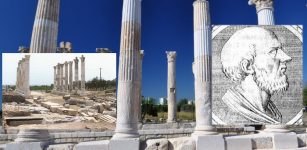 Archaeologists Focus On Greek Poet Aratus’ Memorial Tomb And Ruins Of Soli Pompeiopolis
Archaeology | Aug 12, 2020
Archaeologists Focus On Greek Poet Aratus’ Memorial Tomb And Ruins Of Soli Pompeiopolis
Archaeology | Aug 12, 2020 -
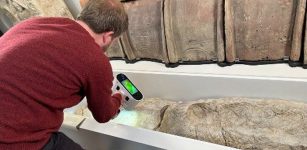 3D Scans Used To Study Mysterious Roman Burial Practice
Archaeology | Jun 5, 2023
3D Scans Used To Study Mysterious Roman Burial Practice
Archaeology | Jun 5, 2023 -
 Why Did Stone Age People Cut Off Their Fingers?
Archaeology | Dec 6, 2018
Why Did Stone Age People Cut Off Their Fingers?
Archaeology | Dec 6, 2018 -
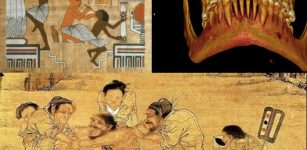 Ancient History Of Dentistry
Featured Stories | Jun 22, 2018
Ancient History Of Dentistry
Featured Stories | Jun 22, 2018 -
 What Caused The Year Without A Summer In 1816?
Ancient History Facts | Sep 17, 2018
What Caused The Year Without A Summer In 1816?
Ancient History Facts | Sep 17, 2018 -
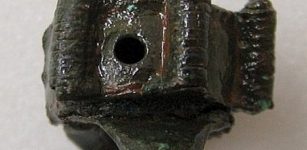 Bizarre Old Ring With License To Kill
Artifacts | Jun 29, 2014
Bizarre Old Ring With License To Kill
Artifacts | Jun 29, 2014 -
 Unique 4,000-Year-Old Board Game – Unearthed In Oman
Archaeology | Jan 18, 2022
Unique 4,000-Year-Old Board Game – Unearthed In Oman
Archaeology | Jan 18, 2022 -
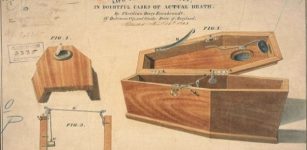 Strange History Of Safety Coffins: From Ancient To Modern Times
Featured Stories | Feb 9, 2016
Strange History Of Safety Coffins: From Ancient To Modern Times
Featured Stories | Feb 9, 2016 -
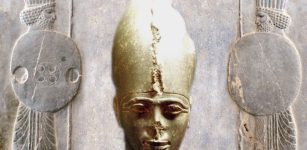 Pharaoh Psamtik III’s Deadly Encounter With Cambyses II Of Persia Ended The 26th Dynasty Of Egypt
Featured Stories | Apr 16, 2021
Pharaoh Psamtik III’s Deadly Encounter With Cambyses II Of Persia Ended The 26th Dynasty Of Egypt
Featured Stories | Apr 16, 2021 -
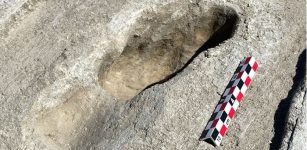 88 Ice Age Human Footprints In Utah Desert Shed New Light On Ancient Americans
Archaeology | Aug 11, 2022
88 Ice Age Human Footprints In Utah Desert Shed New Light On Ancient Americans
Archaeology | Aug 11, 2022 -
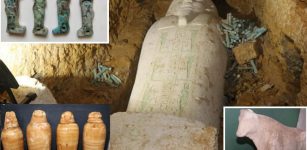 Hundreds Of Marvelous Ancient Egyptian Treasures Found Inside Tombs In Minya
Archaeology | Oct 27, 2020
Hundreds Of Marvelous Ancient Egyptian Treasures Found Inside Tombs In Minya
Archaeology | Oct 27, 2020 -
 African Stonehenge – Extraordinary Stone Circles Of Senegambia – Who Were The Unknown Builders?
Civilizations | Mar 29, 2014
African Stonehenge – Extraordinary Stone Circles Of Senegambia – Who Were The Unknown Builders?
Civilizations | Mar 29, 2014 -
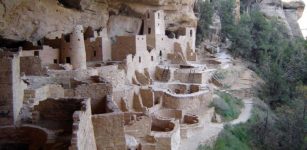 Sophisticated Masonry In Anasazi Dwelling Ruins At Mesa Verde National Park, Colorado, USA
Civilizations | Aug 11, 2015
Sophisticated Masonry In Anasazi Dwelling Ruins At Mesa Verde National Park, Colorado, USA
Civilizations | Aug 11, 2015 -
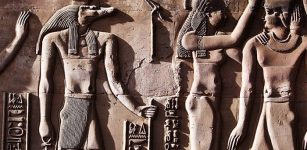 Sobek – Enigmatic Crocodile God Of Ancient Egypt
Civilizations | Sep 5, 2015
Sobek – Enigmatic Crocodile God Of Ancient Egypt
Civilizations | Sep 5, 2015 -
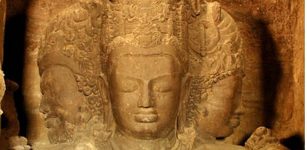 Ancient Complex Of Elephanta Caves In India
Featured Stories | Dec 27, 2016
Ancient Complex Of Elephanta Caves In India
Featured Stories | Dec 27, 2016 -
 Islands Of The Tropical Pacific Ocean Were Settled Much Earlier Than Previously Thought – New Theory
Archaeology | Dec 20, 2022
Islands Of The Tropical Pacific Ocean Were Settled Much Earlier Than Previously Thought – New Theory
Archaeology | Dec 20, 2022 -
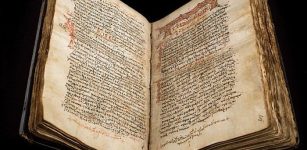 Secrets Of The Bible: Codex Zacynthius – Hidden Text In New Testament May Soon Be Uncovered
Biblical Mysteries | Oct 7, 2014
Secrets Of The Bible: Codex Zacynthius – Hidden Text In New Testament May Soon Be Uncovered
Biblical Mysteries | Oct 7, 2014 -
 The Use Of Surnames Started During The Middle Ages In England
Ancient History Facts | Feb 23, 2016
The Use Of Surnames Started During The Middle Ages In England
Ancient History Facts | Feb 23, 2016 -
 Avraga In Eastern Mongolia Was Winter Base Camp Of Genghis Khan – Study
Archaeology | Jul 8, 2020
Avraga In Eastern Mongolia Was Winter Base Camp Of Genghis Khan – Study
Archaeology | Jul 8, 2020 -
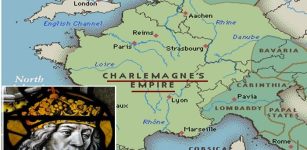 On This Day In History: Charlemagne Became The King Of The Franks – On Dec 5, 771
News | Dec 5, 2016
On This Day In History: Charlemagne Became The King Of The Franks – On Dec 5, 771
News | Dec 5, 2016


